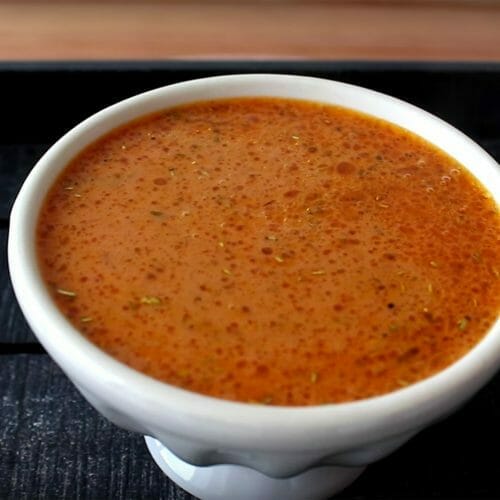Whisky sauce, or whiskey sauce, is a rather popular sauce globally. As you can probably tell from its name, the key ingredient in this sauce is a hearty splash of whisky, topped off with various flavorings. At the end of its preparation is a frothy yet savory sauce with just the right amount of liquid happiness in it.
Origin
Whisky sauce is indigenous to- yes, you guessed it- Scotland. This sauce has been used since ancient times in Scottish cooking. This sauce was often accompanied by haggis- a traditional Scottish dish that comprises of a calf/ sheep’s offal which are boiled and then eaten.
Interestingly, over the years, different types of alcohol have been used to make this sauce. This suggests that this sauce might actually be a modern-day invention. To support this, there seems to be lack of sufficient documentation in order for the sauce to be classified as an ancient recipe.
In addition to this, there have several modifications of whisky sauce in today’s world. For example, this sauce has been mixed with barbecue sauces to create a richer and tastier sauce. You can easily find this blend on supermarket shelves under brands such as Jack Daniel’s and Jim Beam.
History and background
The use of whisky in cooking goes back to the Victorian era. In fact, according to the famous cookery book known as Mrs. Beeton’s Book of Household Management, there exists several recipes that used whisky as both a primary or supplementary ingredient.
Nevertheless, in spite of this, many historians agree that whisky sauce originated from Scotland and has been popularized as a Scottish invention for so long that it is nearly impossible to consider it under any other heritage.
Ingredients
Typical ingredients are: Your choice of whiskey, heavy cream and different seasonings with salt and pepper
How to make whiskey sauce
It is actually pretty easy to make this sauce. Plus, the fact that it consists of very few ingredients that make it hard to screw the sauce up. This is how you make whisky sauce:
- Start by pouring your whisky into a sauce pan. Light your sauce of heat. The alcohol is heated in order to dull its bitter taste.
- Add a bit of double cream as you whilst you stir.
- After this, reduce the heat and allow the sauce to thicken as you stir periodically.
- Finally, add your choice of seasoning such as salt and/or pepper.
What does whisky sauce go well with?
As you can probably tell-this sauce goes well with several meals. The fact that this sauce is thick and savory makes it the perfect accompaniment in fish and meat based meals. Serve your whiskey sauce with steak or even with a kiln roasted salmon. This sauce would also go well with some mushrooms or even shellfish. This sauce is also great with a piece of toasted bread. It makes for a very fulfilling and tasty snack.

Whisky sauce
Ingredients
- 100 g Butter
- 70 g Tomato puree
- 2.5 dl Heavy cream
- 0.5-1 dl Whisky Make it a fairly decent one
- 1 tsp Sugar
- 1.5 tsp Rosemary dry / fresh (preferably crushed in mortar)
- 0.5 tsp thyme may be omitted and replaced with rosemary
- 2 tbsp Balsamic vinegar can be omitted
- Pepper
- Salt more than you think - about 1.5 teaspoons
- Ketchup can be omitted
Instructions
- Start by melting the butter slowly so it do not take color.
- Add tomato paste and warm until it begins to bubble. Then turn it down again (do not boil).
- Add the rest of the ingredients and stir it together quietly.
- Let the sauce simmer for 5-6 minutes. Season with salt and pepper. You need more salt than you think.
- Then it is ready for serving. That's how simple it is.
Video
Notes
- You can make a large portion and then freeze in smaller quantities. Remember to use a heavy cream (38%) so that the sauce does not break when you heat it again.
- Preferably use a "non-smoked" whiskey. Like Jack Daniels or a bourbon. A brown rom can also be used (eg Captain Morgan).
- If you do not have thyme, add rosemary instead. You can also replace rosemary with thyme.
- Use a little ketchup if you think the taste is a little too harsh - it gives a good sweetness. Alternate add a little sugar.
